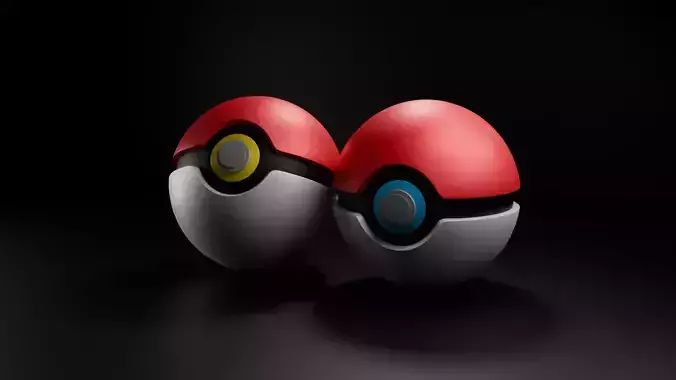
Pokeboll Low-poly 3D model
A 3D model of a Pokéball is a detailed, digital representation of the iconic item from the Pokémon universe. The model is typically spherical, featuring a smooth, glossy surface with specific design elements that define its look. Here’s a breakdown of the key features for a Pokéball 3D model:
Shape and Size: The Pokéball is a perfect sphere with a standard diameter, often designed in a 1:1 ratio in the model to the original size in the games and shows.
Color Scheme: The ball is split into two halves:
The top half is red.The bottom half is white.A black horizontal band runs around the middle, separating the two halves.Central Button: In the center of the black band is a circular white button, often featuring a slight depth or bump in the center to give it a realistic look. This button typically has a black circle in the center.
Texture and Material: The surface of the Pokéball can be textured to look shiny and smooth, emulating the glossy plastic appearance seen in the games and animations. It may include reflective properties, making the ball look more polished or realistic, with light reflections on the red and white surfaces.
Subtle Details: The model may include seams or slight indentations where the two halves of the Pokéball meet, adding realism.
Lighting and Shadows: The 3D model may be lit from various angles to show off its reflective surface, casting soft shadows beneath the ball and highlighting its curves and shiny texture.
In a 3D model, these elements come together to create an accurate, visually appealing replica of the Pokéball, often used for video games, animations, or as collectible digital items. The model might also include additional details like slight wear and tear to make it more dynamic and lifelike.

